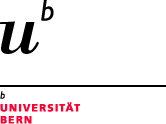BayeScan

Detecting natural selection from population-based genetic data
| Home | News | Download | Versions | Screenshots | Contact |
Presentation
This program,
BayeScan aims at identifying candidate loci under natural selection
from genetic data, using differences in allele frequencies between
populations. BayeScan is based on the multinomial-Dirichlet model. One
of the simplest possible scenarios covered consists of an island model in which
subpopulation allele frequencies are correlated through a common
migrant gene pool from which they differ in varying degrees. The
difference in allele frequency between this common gene pool and each
subpopulation is measured by a subpopulation specific FST
coefficient. Therefore, this formulation can consider realistic
ecological scenarios where the effective size and the immigration rate
may differ among subpopulations.
Being Bayesian, BayeScan incorporates the uncertainty on allele frequencies due to small sample sizes. In practice, very small sample size can be use, with the risk of a low power, but with no particular risk of bias. Allele frequencies are estimated using different statistical models depending on the type of genetic marker used. In BayeScan, three different types of data can be used: (i) codominant data (as SNPs or microsatellites), (ii) dominant binary data (as AFLPs) and (iii) AFLP amplification intensity, which are neither considered as dominant nor codominant.
Selection is introduced by decomposing FST coefficients into a population-specific component (beta) shared by all loci, and a locus-specific component (alpha) shared by all the populations using a logistic regression. Departure from neutrality at a given locus is assumed when the locus-specific component is necessary to explain the observed pattern of diversity (alpha significantly different from 0). A positive value of alpha suggests diversifying selection, whereas negative values suggest balancing or purifying selection. This leads to two alternative models for each locus, including or not the alpha component to model selection. For each locus, a reversible-jump MCMC explores models with and without selection (alpha component being either present or absent, respectively) and estimates their relative posterior probabilities.
Being Bayesian, BayeScan incorporates the uncertainty on allele frequencies due to small sample sizes. In practice, very small sample size can be use, with the risk of a low power, but with no particular risk of bias. Allele frequencies are estimated using different statistical models depending on the type of genetic marker used. In BayeScan, three different types of data can be used: (i) codominant data (as SNPs or microsatellites), (ii) dominant binary data (as AFLPs) and (iii) AFLP amplification intensity, which are neither considered as dominant nor codominant.
Selection is introduced by decomposing FST coefficients into a population-specific component (beta) shared by all loci, and a locus-specific component (alpha) shared by all the populations using a logistic regression. Departure from neutrality at a given locus is assumed when the locus-specific component is necessary to explain the observed pattern of diversity (alpha significantly different from 0). A positive value of alpha suggests diversifying selection, whereas negative values suggest balancing or purifying selection. This leads to two alternative models for each locus, including or not the alpha component to model selection. For each locus, a reversible-jump MCMC explores models with and without selection (alpha component being either present or absent, respectively) and estimates their relative posterior probabilities.
Citation
- Foll M and OE Gaggiotti (2008) A genome scan method to identify selected loci appropriate for both dominant and codominant markers: A Bayesian perspective. Genetics 180: 977-993
- Foll M, Fischer MC, Heckel G and L Excoffier (2010) Estimating population structure from AFLP amplification intensity. Molecular Ecology 19: 4638-4647
- Fischer MC, Foll M, Excoffier L and G Heckel (2011) Enhanced AFLP genome scans detect local adaptation in high-altitude populations of a small rodent (Microtus arvalis). Molecular Ecology 20: 1450-1462